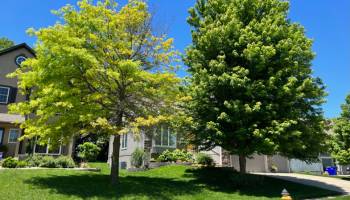Fall Tree Care Checklist for Cedar Rapids: Preparing Your Trees for Iowa Winter
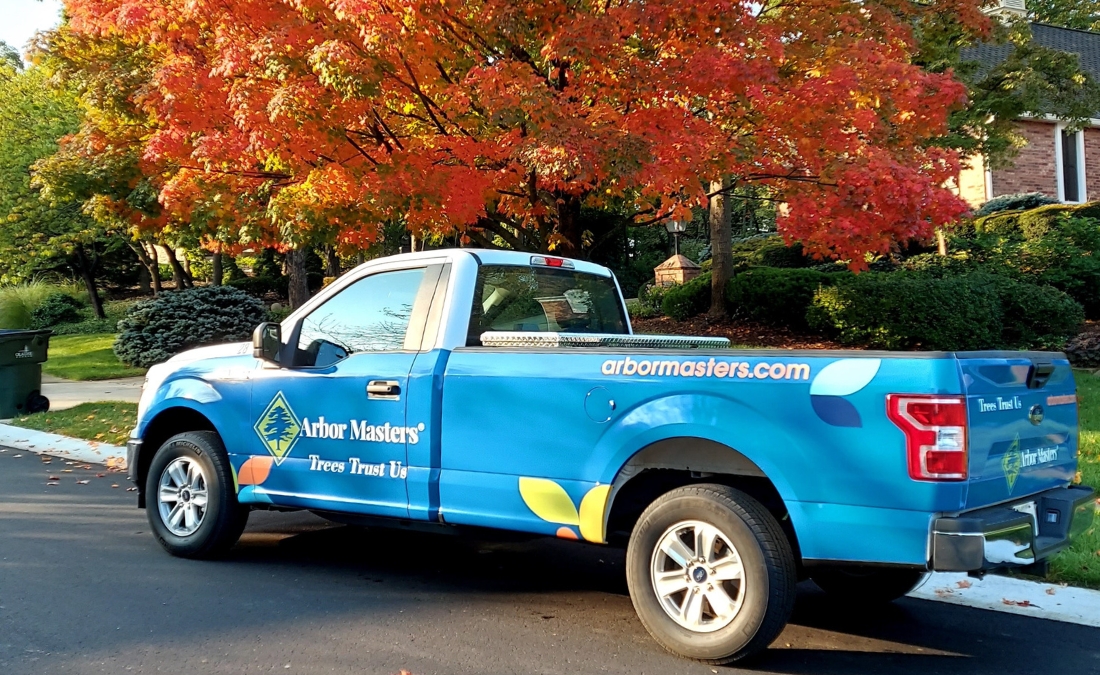
Don’t let Iowa’s winter catch your trees off guard. Discover Cedar Rapids’ fall tree care checklist to protect your landscape before the freeze hits.
As autumn settles over Cedar Rapids, neighborhoods like NewBo and Wellington Heights face the important task of readying their trees for Iowa’s challenging winter months. Effective fall tree care in Cedar Rapids means staying ahead with proactive maintenance while accounting for the lasting effects of the 2020 derecho and the demands of our Zone 5a climate.
Whether you’re caring for mature survivors of the 2020 derecho or nurturing newly planted ReLeaf trees, fall presents the perfect opportunity to set your trees up for long-term health and resilience.
Key Takeaways
- Fall tree care timing is critical in Cedar Rapids, beginning in September and continuing through November, with specific tasks coordinated to Zone 5a climate conditions and local regulations.
- Newly planted ReLeaf trees require focused watering, mulching, and monitoring to establish strong root systems before their first winter in Iowa’s harsh climate.
- Post-derecho mature trees benefit significantly from Certified Arborist assessments to identify structural weaknesses and prevent future storm damage in your yard.
- Fall fertilization helps trees store nutrients and develop stronger root systems, which is especially important in Cedar Rapids’ naturally alkaline soils.
- While you can handle basic fall care tasks yourself (such as proper watering and mulching), things like pruning mature trees and assessing storm damage requires professional expertise and proper equipment for safety.
Why Cedar Rapids Trees Need Special Fall Care
To understand what your trees need this fall, it helps to look at the biggest factors shaping Cedar Rapids landscapes: long-term storm recovery, general climate challenges, and ongoing replanting efforts.
Post-Derecho Tree Care Challenges
Cedar Rapids’ landscapes changed dramatically after the August 2020 derecho destroyed approximately 2.67 million trees throughout Iowa’s forests and another 4.4 million across urban canopies.
As a result, homeowners in Marion and throughout Linn County are now managing a diverse mix of derecho survivors, newly planted saplings from the ReLeaf iniative, and replacement trees on their property. This unique situation creates specific fall care challenges that require understanding both mature tree recovery and young tree establishment needs.
Cedar Rapids’ Climate and Soil Factors
Cedar Rapids’ Zone 5a climate adds another layer of complexity to your fall tree care routine. With minimum temperatures dropping to -15°F to -10°F, trees need proper fall readiness to survive Iowa’s harsh winters. The city’s underlying limestone bedrock creates naturally alkaline soil conditions that can limit your trees’ ability to absorb essential nutrients, making fall fertilization even more critical for maintaining long-term tree health.
How ReLeaf Cedar Rapids Is Reshaping the City’s Tree Canopy
The ReLeaf Cedar Rapids initiative has made impressive progress in restoring the urban canopy. Over 11,000 trees have been planted through 2024, including 3,000 new trees just this fall. These young trees represent a significant investment in your community’s future, but they need different fall care than the mature oaks, maples, and hickories that weathered the storm.
Different Fall Care for Mature and Young Trees
Understanding your property’s specific tree population helps you prioritize fall care efforts effectively. Neighborhoods like Hiawatha and Marion, which experienced varying degrees of derecho damage, may have different tree care needs compared to areas like Czech Village and New Bohemia that are seeing significant replanting efforts through the ReLeaf initiative.
Balancing the needs of older, storm-damaged trees with the establishment of new plantings is key. Mature survivors often require inspections for hidden structural issues, while young trees demand consistent watering, mulching, and protection as they establish roots in the colder months ahead.
POST-DERECHO REALITY: Many of your surviving mature trees sustained hidden damage that becomes apparent years later. Fall inspections help identify weakened branches, trunk damage, or root system problems that could lead to failure during winter storms.
The Complete Fall Tree Care Checklist for Cedar Rapids
Proper timing makes the difference between healthy trees and expensive problems. Each fall task you complete doesn’t just improve tree health today, it also builds the strength your trees need to survive Cedar Rapids’ harsh winters.
From deep watering and fertilization to pruning and structural reinforcement, this month-by-month checklist helps your trees transition smoothly into dormancy while preparing them for freezing temperatures, heavy snow, and high winds.
September Tree Care Tasks
- Continue With Deep Watering: September often brings dry conditions. Provide 1–2 inches of water weekly, focusing on ReLeaf trees and any showing summer stress. Water slowly and deeply to encourage root growth.
- Inspect and Refresh Mulch: Maintain 2-3 inches of mulch in a 3-5 foot radius around each tree, keeping it 6 inches away from the trunk. Fresh hardwood mulch helps conserve soil moisture going into winter.
- Monitor for Pests and Diseases: Watch for signs of late-season activity from emerald ash borer, oak wilt, and other problems. Document concerns for professional evaluation before dormancy.
- Conduct an Initial Pruning Assessment: Begin identifying deadwood or structural issues that should be scheduled for dormant season pruning.
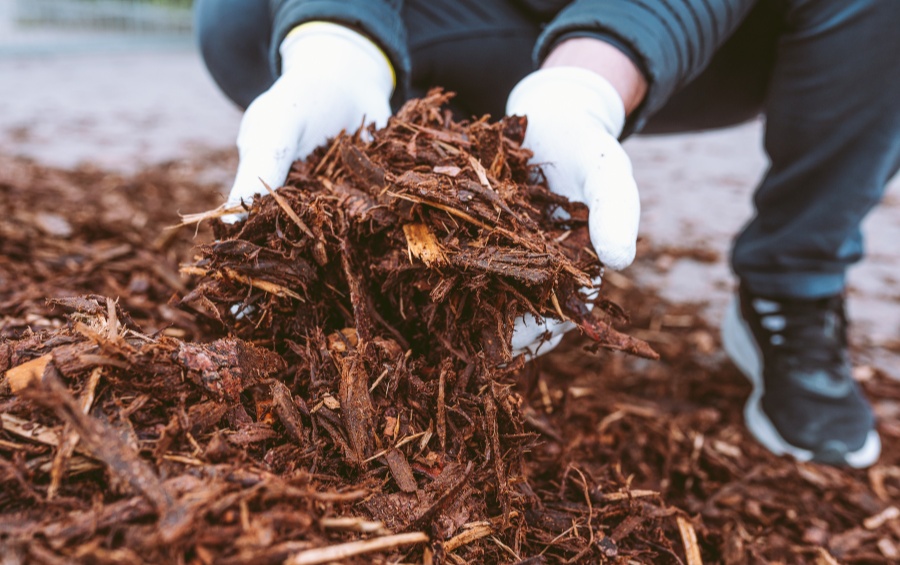
October Tree Care Tasks
- Fertilize for Winter Resilience: Mid-October through early November is ideal for deep root fertilization. Trees can absorb nutrients now and store them for winter.
- Perform Structural Assessments: With leaves off, tree structure is visible. Comprehensive tree health evaluations help identify weak unions, or derecho-related damage that could fail under snow and ice.
- Begin Leaf Management: Remove diseased leaves, but shred and mulch healthy ones to recycle nutrients and improve soil.
- Monitor ReLeaf Trees Closely: Ensure proper mulching, check staking systems, and maintain protective measures for young plantings.
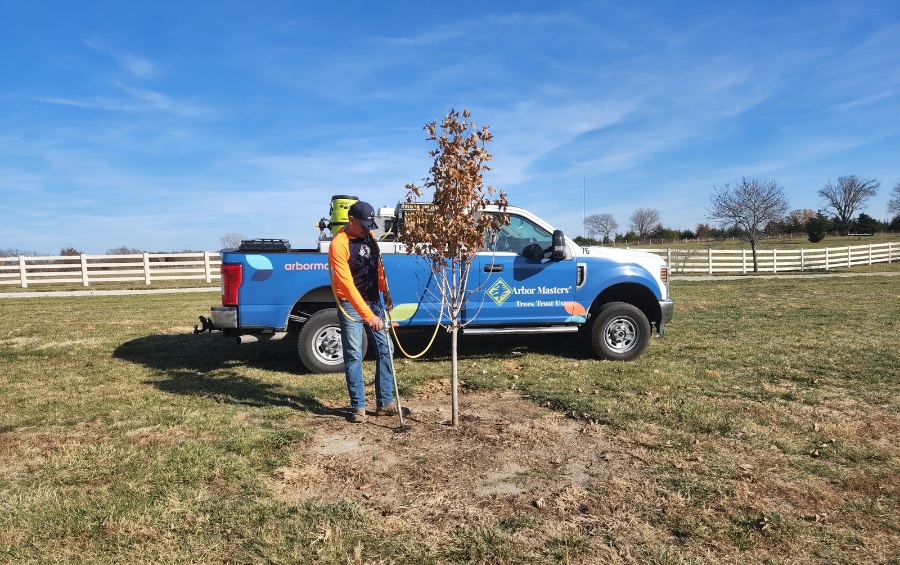
November Tree Care Tasks
- Schedule Dormant Season Pruning: Late November marks the start of safe pruning for many species. Oaks and elms, for instance, should only be pruned during dormancy to prevent disease spread. Proper fall pruning also removes deadwood and weak branches that could fail under snow and ice loads. Professional arborists can reduce crown density in trees prone to ice damage while maintaining the tree’s natural form and health.
- Make a Final Watering Push: Provide a deep soak before the ground freezes (typically late November). Well-hydrated trees resist winter desiccation, especially evergreens and new plantings.
- Reinforce Structural Weaknesses: Install any necessary cabling or bracing before winter storms hit. Derecho-weakened or structurally compromised trees benefit from proactive reinforcement.
- Protect Young Trees: Prepare exposed plantings for winter weather with trunk wraps for thin-barked species, windbreaks in open areas, and properly adjusted staking systems.
- Winterize Your Tree Care Toolkit: Gather mulch, trunk protection materials, and emergency contact information for tree service professionals before harsh weather arrives.
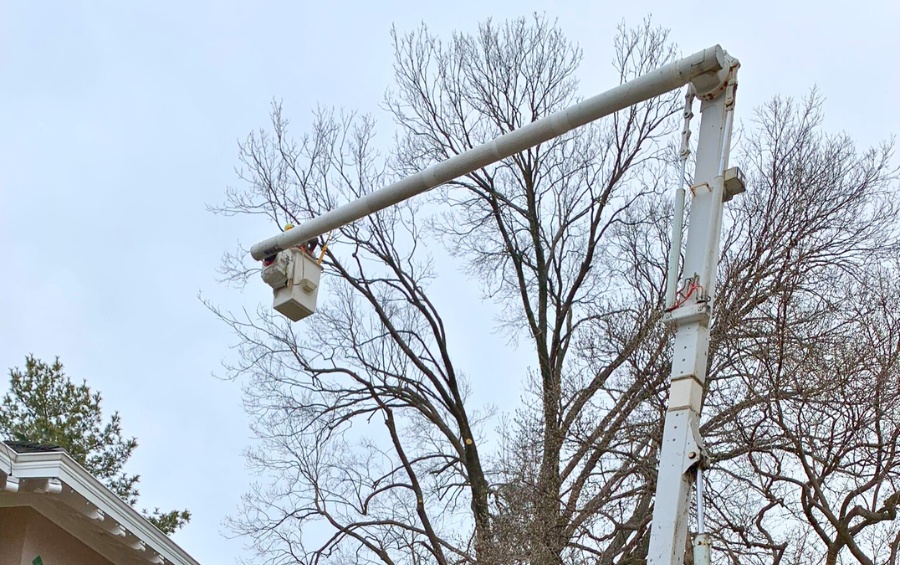
WINTER REALITY CHECK: Cedar Rapids’ Zone 5a climate brings lows near -15°F, with high winds, ice storms, snow loads, and road salt exposure that test every tree’s structural integrity. Fall preparation is what helps your trees survive these stresses.
When to Hire an Arborist vs. DIY Tree Care in Cedar Rapids
There are many fall tree care tasks that you can handle independently, but certain activities require professional expertise, specialized equipment, and proper insurance coverage. Understanding these distinctions helps ensure both your safety and your trees’ health.
Safe DIY Fall Tree Care Activities
These tasks are generally safe for you to handle yourself with basic tools and precautions:
- Basic Mulching: Applying mulch around trees and maintaining proper depth and placement.
- Watering and Monitoring: Providing supplemental water and observing overall tree conditions.
- Leaf Management: Collecting and disposing of diseased leaves from around trees.
- Visual Inspection: Documenting concerns and taking photos for professional consultation.
- Small Debris Cleanup: Removing minor fallen branches and maintaining clean, debris-free areas around trees.
When Professional Services Are Essential
These activities require professional Certified Arborists for safety and effectiveness:
- Branch Pruning: Any pruning of branches over 2 inches in diameter.
- Tree or Large Branch Removal: Removal of any tree or substantial branches.
- Electrical Hazards: Any work involving trees near power lines.
- Structural Assessments: Evaluating mature trees or trees with suspected damage.
- Specialized Fertilization: Deep root injection and soil amendment programs.
Post-Derecho Safety Considerations
Tree work has always been hazardous, and the derecho only increased those risks in Cedar Rapids. Climbing storm-damaged trees or cutting compromised branches can create dangerous situations for
untrained homeowners. Professional arborists not only have the equipment and training to work safely, but they’re also insured – protecting both you and your property if something goes wrong.
Regulatory and Cost Factors
Municipal regulations also influence your professional versus DIY decisions. Cedar Rapids requires permits for certain tree work, particularly in right-of-way areas or when working with protected species like oak trees during restricted periods.
That’s why it’s important to balance immediate expenses against long-term risks when considering costs. Professional tree care prevents costly property damage, maintains tree value, and often proves less expensive than emergency removal after preventable failures.
Frequently Asked Questions About Fall Tree Care in Cedar Rapids
When is the latest date to prune oak trees in Cedar Rapids?
Oak trees can be safely pruned from late October through March in Cedar Rapids, avoiding the April through September period, when oak wilt disease is most easily transmitted.
Do evergreens in Cedar Rapids need different fall care than deciduous trees?
Yes. Unlike deciduous trees, evergreens keep their needles year-round, which means they continue losing moisture through winter. In Cedar Rapids’ Zone 5a climate, evergreens particularly benefit from deep watering until the ground freezes and may need extra mulch for root insulation. Anti-desiccant sprays can also help reduce winter burn, especially on young pines and spruces.
How do I know if my tree needs professional care before winter arrives?
Contact a Certified Arborist if you notice the following:
- Dead branches over 2 inches in diameter
- Visible trunk damage
- Significant lean development
- The tree was damaged during the 2020 derecho
Any safety concerns or uncertainty about tree stability warrant professional evaluation before winter storms arrive.
What emergency steps should I take if a tree fails during a winter storm?
If a tree comes down during a storm, keep people and pets away from the area, especially if power lines are involved. Do not attempt to cut or move large limbs yourself – snow and ice make conditions unstable and dangerous. Instead, document the damage with photos for insurance purposes and call a Certified Arborist or emergency tree service to safely handle the cleanup.
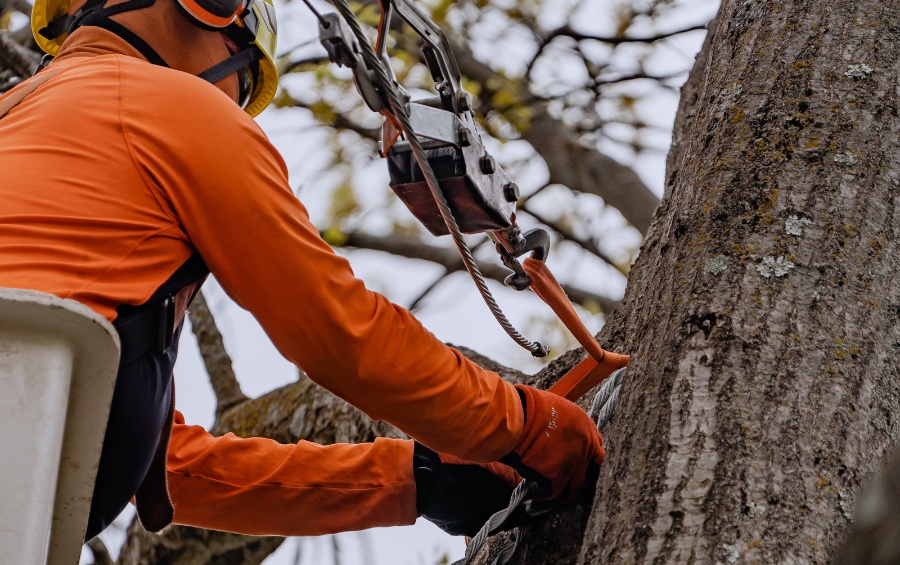
For Expert Fall Tree Care in Cedar Rapids, Trust Arbor Masters
No matter if you’re maintaining mature derecho survivors or nurturing newly planted ReLeaf trees, professional guidance and adequate fall preparation helps navigate the unique challenges of Iowa’s Zone 5a climate.
Don’t wait for winter storms to reveal tree problems. Contact our Certified Arborists at 319-359-6135 for your fall tree inspection and care consultation. We’ll help you develop a customized fall care plan that protects your trees, your property, and your investment in Cedar Rapids’ green future.

Get the latest local news, tree care tips, special offers, and company updates directly to your inbox! It's easy to subscribe and there's no spam - we promise.
"*" indicates required fields


